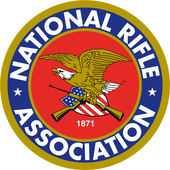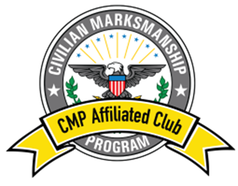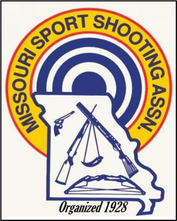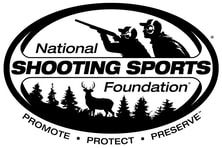Handgun (Pistol/Revolver)
Stl Bench Rest Rifle Club
USPSA - United States Practical Shooting Association
Summary
Getting Started:
Why would you shoot USPSA Competition? USPSA is a great way to become more proficient in gun handling and you probably already have a firearm that would allow you to compete in a USPSA match. Read on to get an understanding of what is needed to compete in a USPSA match. If you have any questions please feel free to contact the Stl Bench Rest Rifle Club match director for USPSA competition. Safety: Loaded Firearms: If you carry a gun, please stow it or unload it PRIOR to arriving at the range. USPSA events are strictly “cold range” (NO loaded firearm) events and that includes the parking area. Unloaded Firearms: There are designated safety areas at every USPSA match. These are the ONLY areas where handling of UNLOADED firearms is permitted. This area is where you’ll take your unloaded gun out of your bag and put it in your holster before the match or put it back in your bag after the match. If you have to work on a gun during a match, you can do it here, but there is NO handling of ammunition or loaded magazines in designated safety areas this includes dummy rounds. Loaded magazines can be on your belt while you’re in the safe area, but must NOT be handled. Handling of a unloaded firearm outside this area is a match DQ. USPSA Divisions:
Classifications: It is recommended you join USPSA. USPSA has a classification system and you can see where you stand with other USPSA members across the country. Although you do not have to join USPSA to shoot Level 1 USPSA matches like we hold at the St Louis Bench Rest Club (BRRC.). Level 2 and above you must be a member of USPSA. The Classifications are as follows: Grand Master 95 to 100% Master 85 to 94.9% A Class 75 to 84.9% B Class 60 to 74.9% C Class 40 to 59.9% D Class Below 40% Other Equipment: You’ll need a belt that attaches securely to your body. It should make use of the belt loops on your pants. You’ll also need a holster that securely holds your firearm and fully encloses the trigger guard. An Outside-Waist-Band holster is not required, but is strongly recommended. Magazine pouches should hold your magazines securely on your belt. You’ll be running with your gun, so everything needs to stay where you put it. It’s rare that a local match will require more than 200 rounds of ammunition. If you bring 200 rounds you should be fine (unless you’re prone to missing a lot, in which case use your best judgement. And of course you’ll need good, impact rated eye protection at all times when you’re on the range and hearing protection too. Power Factor: There are two different Power Factors, called “Major” and “Minor” and they are based on a simple calculation of bullet weight and velocity. Minor PF can be thought of as a “handicap” that’s applied to your score when you use low-recoil ammunition. It is applied by awarding fewer points for certain hits on paper targets. Major Power Factor competitors avoid this handicap. Well go over the Power Factor for each division in a moment, but first let’s look at how it’s calculated: The calculation is this: (bullet weight x velocity in FPS)/1000 = PF. A value of 125-164.9 is a minor power factor round. 165.0 and above is major power factor. Power Factors less than 125.0 may not be used for scoring competitors. Let’s look at a few examples:
For Minor Power Factor, on a standard paper (cardboard) target with A,B,C and D scoring zones, the point values are as follows: A zone = 5 points B zone = 2 points C zone = 2 points D zone = 1 point For Major Power Factor, on the same target, the point values of each zone are: A zone = 5 points B zone = 3 points C zone = 3 points D zone = 2 points As you can see, B/C/D zone hits get one less point for minor PF than for major PF. Each division makes use of Power Factor just a little differently, so let’s look at that:
Match Details: When you get to the match, you can put on all of your gear at your car EXCEPT your gun. Then you can proceed to the designated safe area to un-case and holster your gun. Remember, you can have loaded magazines in the safe area, but you CANNOT handle them there. Violating this rule will result in a match disqualification. Remember, safety first and always. First time shooters need to attend a new shooter briefing. This will be announced before the match starts. There will be a shooters brief or safety brief for all shooters right before the match. After that, shooters will head to their respective bays. Our club matches are usually 6 “courses of fire” or “stages”. Competitors are split up into “squads”, typically with the number of squads equaling the number of stages. Start time is usually 7:00 AM and ends around 2:30 PM. Every stage starts with the range officer reading the Written Stage Briefing out loud to the entire squad. This stage briefing tells you where the start location is on the stage, what the shooter start position is (hands at sides, hands at surrender position, etc), and what condition your firearm must be in (loaded/unloaded, on a table, etc). It will also tell you scoring parameters for the stage (we won’t get into the specifics, but some stages are “shoot ’til you hit ’em all” and some specify a number of rounds that may be fired without penalty). Once the written stage briefing has been read you’ll have a few minutes to walk the stage and get your plan together for how you’re going to engage the targets. Remember, you cannot unholster your gun during this walk through…”air gunning” only. Time To Shoot: When it’s your turn to shoot, you’ll proceed to the designated start location and wait for instructions from the Range Officer. DO NOT unholster your gun until you are told to by the Range Officer, as people may be downrange setting up targets, etc. The first instruction you’ll be given by the Range Officer is this: "MAKE READY". This command tells you it’s time to unholster and load your gun (unless the stage calls for an unloaded start). Once you’re ready to go, you’ll assume the start position (that could be “surrender position”, sitting in a chair, standing with your hands relaxed at your sides, etc) as defined in the stage briefing. The Range Officer will then ask you “ARE YOU READY”. You are not required to respond to this command. No response is considered an affirmative just the same as saying “I’m ready”. It’s your choice. The next command you’ll receive is “STANDBY”. This tells you that the start buzzer will follow in the next few seconds. Once the buzzer sounds, the shooting begins! There are a few important safety rules to remember while you’re shooting. There is an imaginary “180 degree” line that is the boundary between “up-range” and “downrange”. This line generally moves with you as you move through the course of fire. Pointing your weapon “up-range” of the 180 degree line is a safety violation and will result in match disqualification. Anytime you are moving and not engaging targets, your finger MUST be visibly outside of the trigger guard. When you are reloading, your finger MUST be visibly outside of the trigger guard. You may NEVER holster a loaded handgun except at the initial “make ready” command. When you finish the course of fire, listen for and follow the Range Officer commands to unload and re-holster your gun. If you hear the command “STOP” from the Range Officer, cease movement and shooting, face down range with your gun pointed into the berm and listen for further instructions. It could be something simple like a piece of steel that fell prematurely, or something serious like someone down range or you have committed a safety violation and are being stopped. When you have completed the course of fire, the Range Officer will say “IF YOU ARE FINISHED, UNLOAD AND SHOW CLEAR”. At this point, if you are in fact done shooting, remove the magazine from your gun (or moon clip for the revolver guys), lock the slide back and hold your gun so that both you and the Range Officer can view your chamber. Once you have both confirmed that your gun is unloaded, the Range Officer will give the command “IF CLEAR, HAMMER DOWN AND HOLSTER” (or “IF CLEAR, CYLINDER CLOSED AND HOLSTER” for revolver guys). At that point, you can close your slide, point your gun into the berm and pull the trigger to drop the hammer or striker, then put your gun back in your holster. DON’T RUSH the unload and show clear commands it is not timed! The course of fire formally ends when the Range Officer gives the command “RANGE IS CLEAR”. At that point, you can proceed down range with the RO and the scorer to score your targets. After the match, please find out if you need to help tear down the stages. If everyone pitches in, this goes quickly and everyone can get home. This is really important! 99% of the time, it’s fellow competitors that volunteered their time to put the stages together. Make sure you help them put everything away. It’s just the right thing to do. Scores are usually posted within a few hours. Scores and upcoming match registration can be found at Stl Bench Rest Rifle Club USPSA Registration. |
ContactMelinda Thompson
info@shootingstl.com Rules
Registration
ResultsPhotos
Other Links

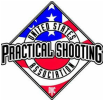

|
